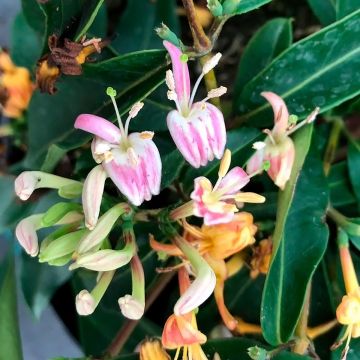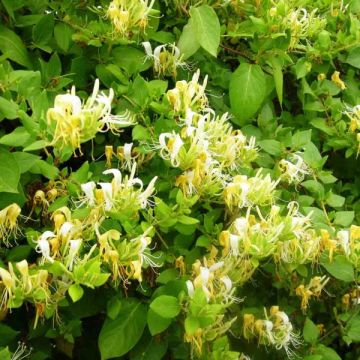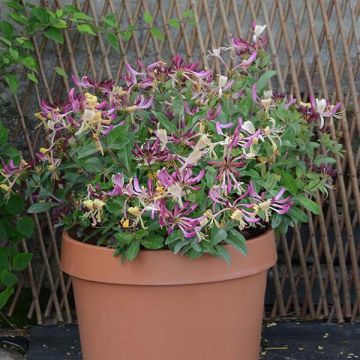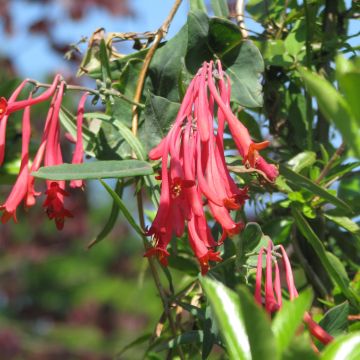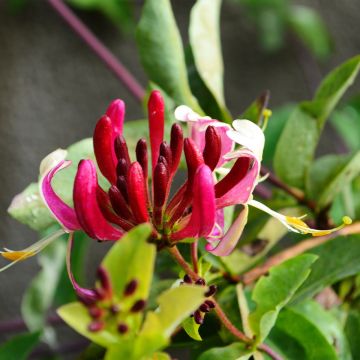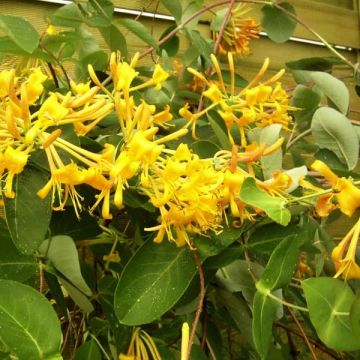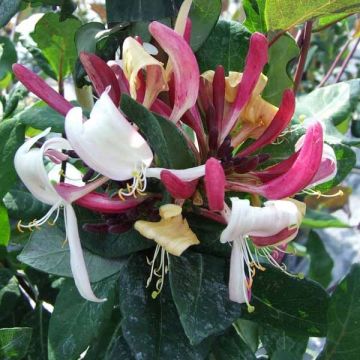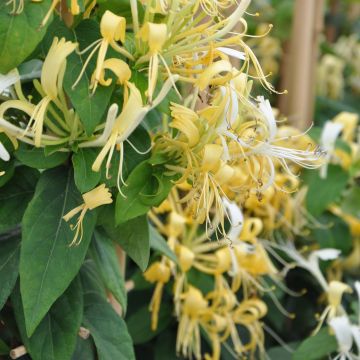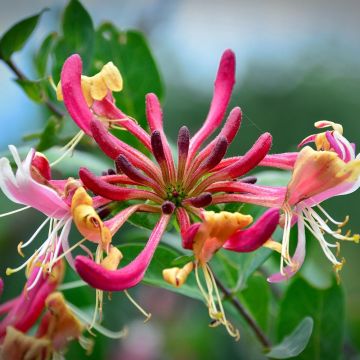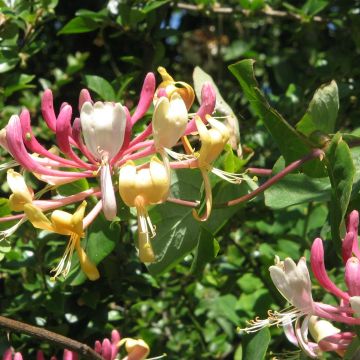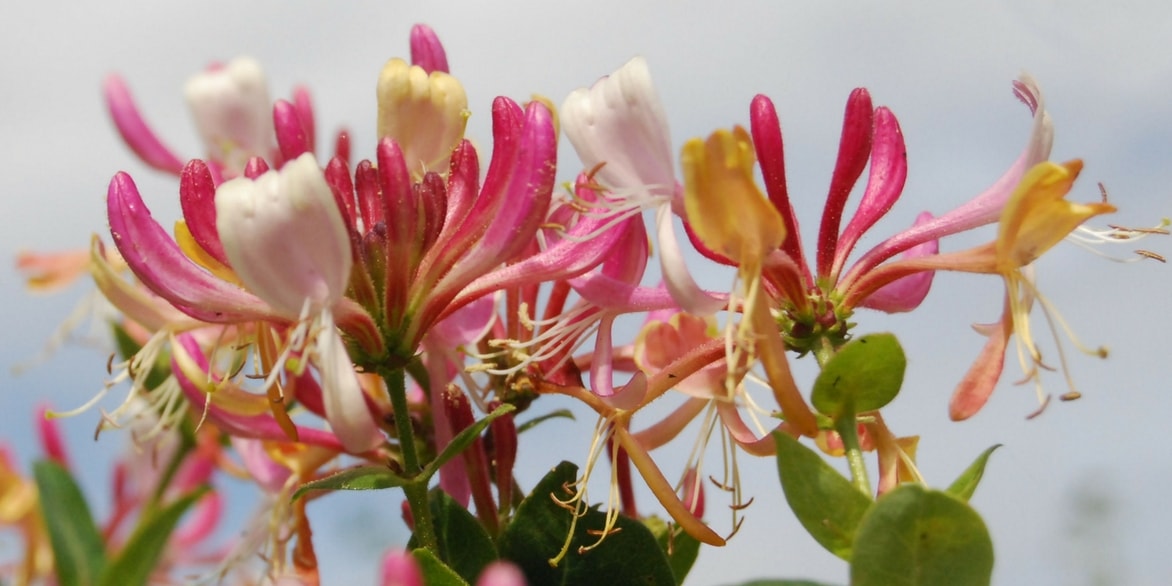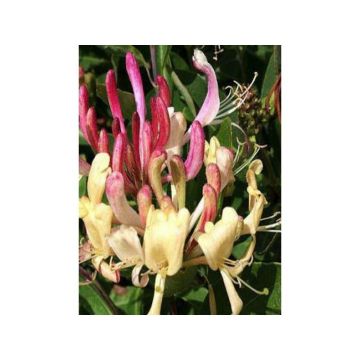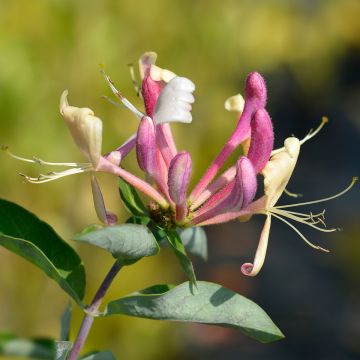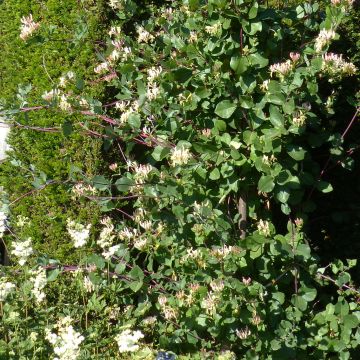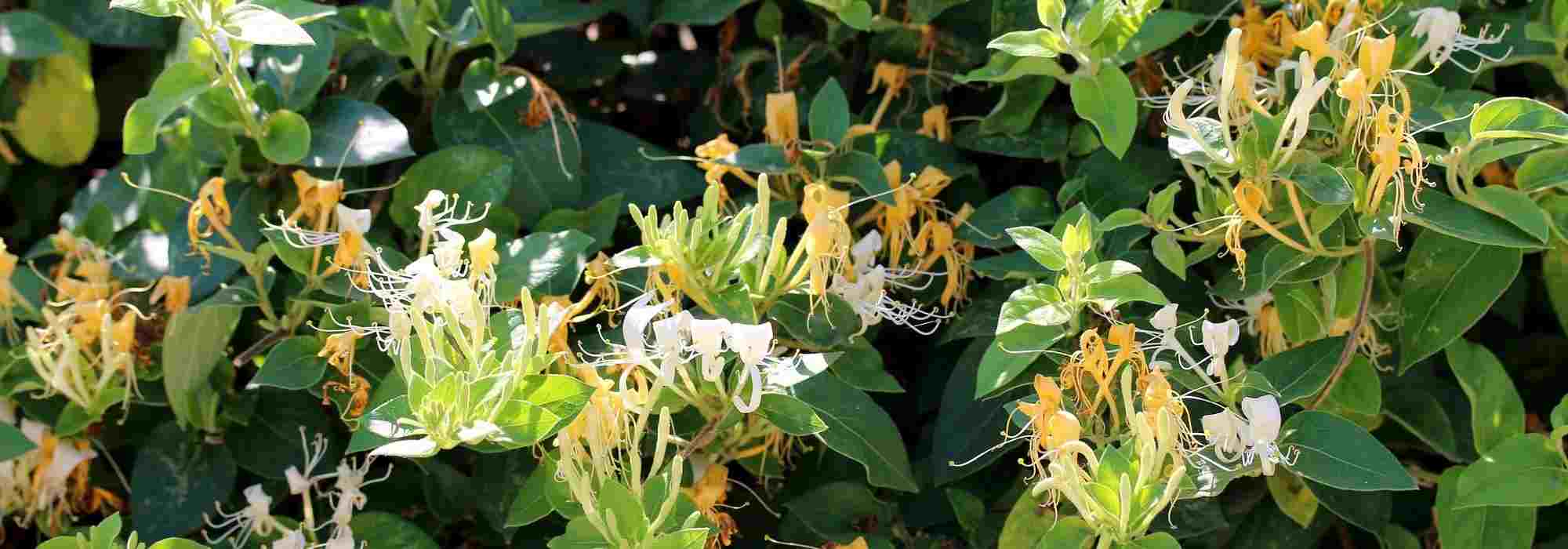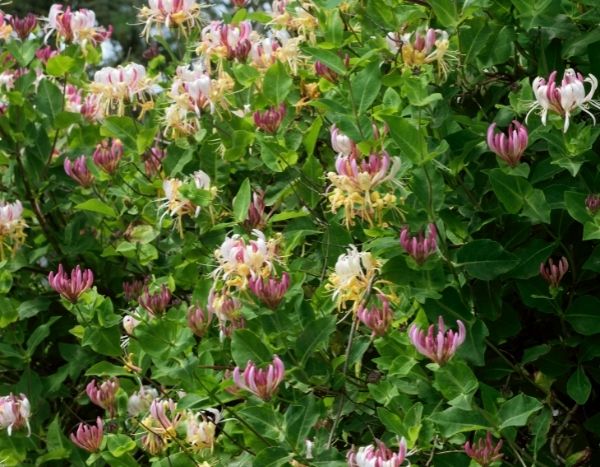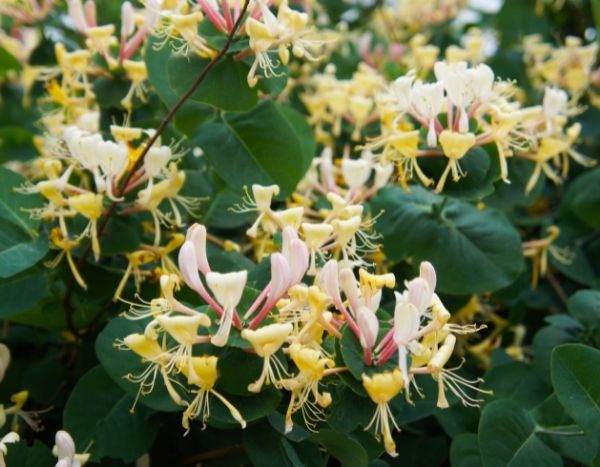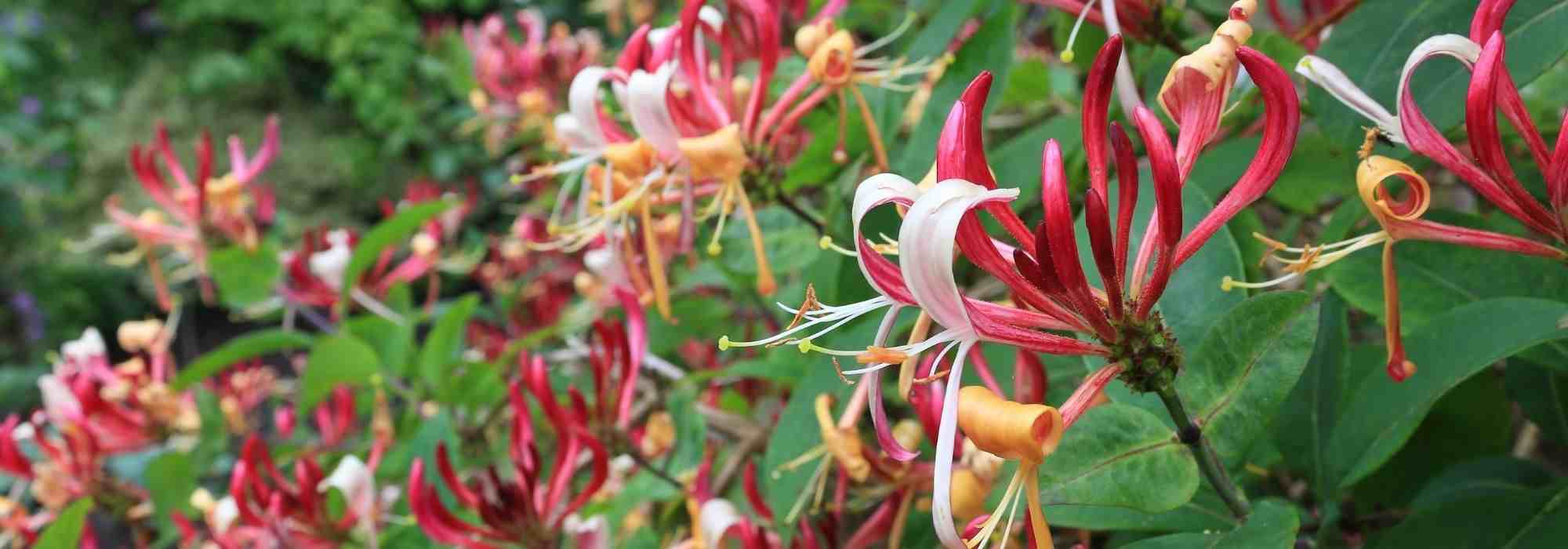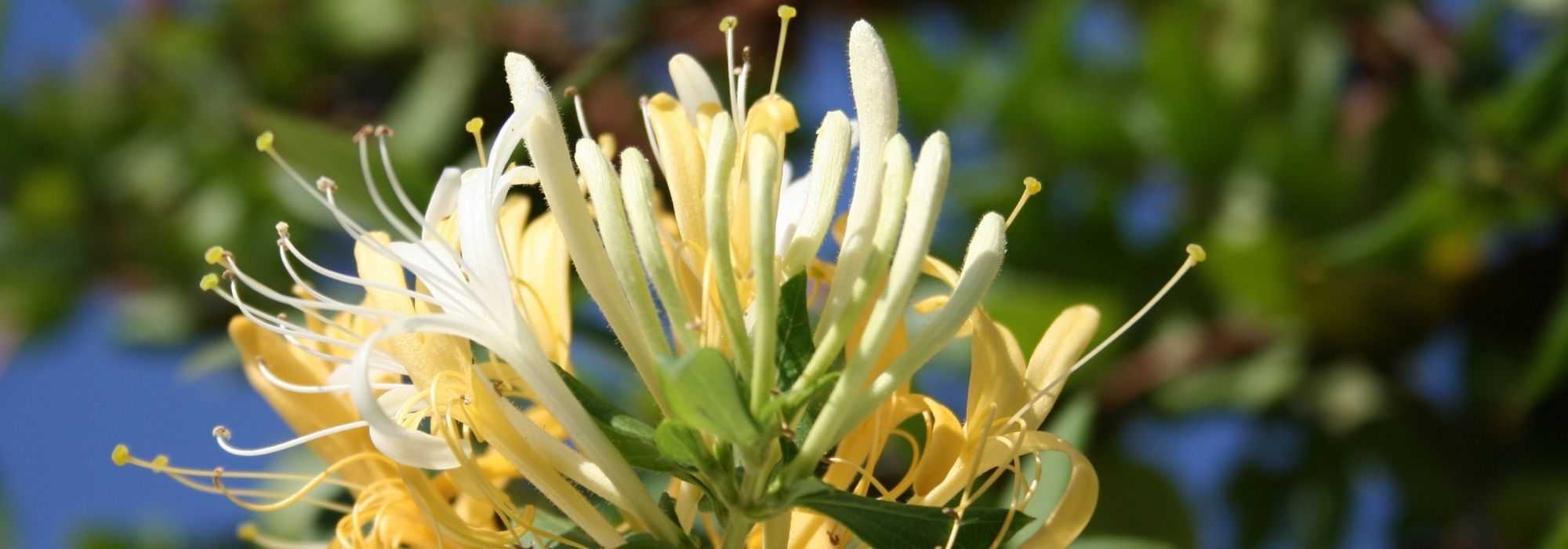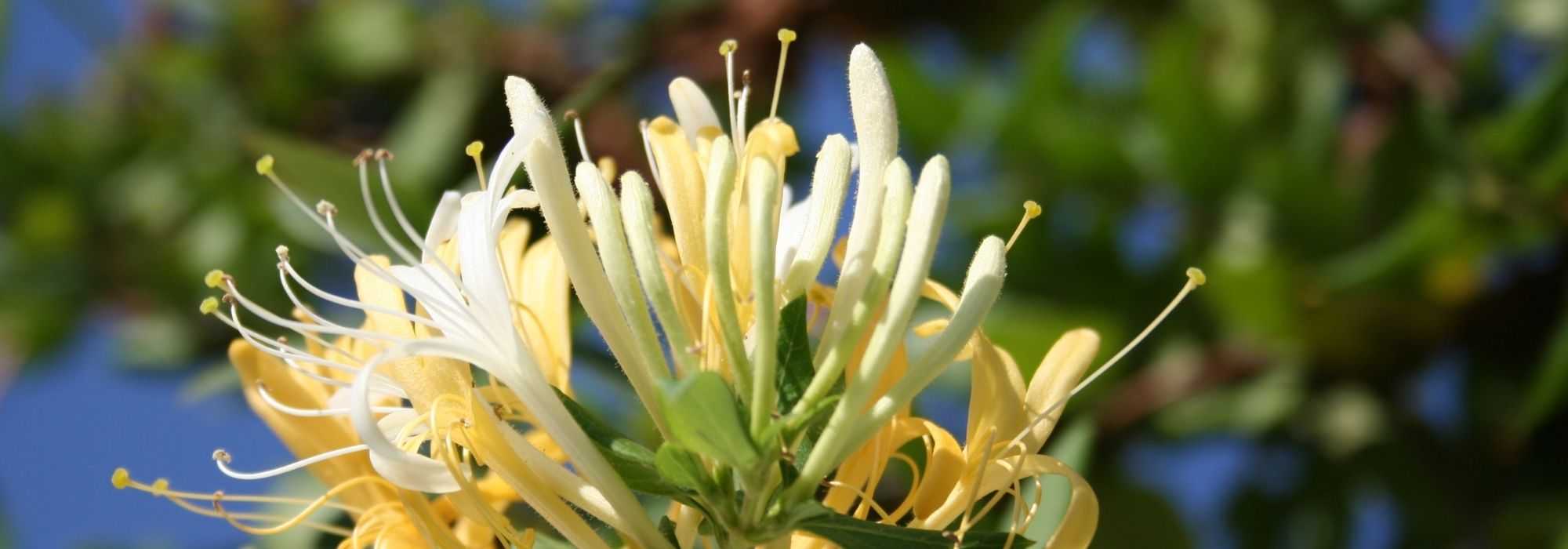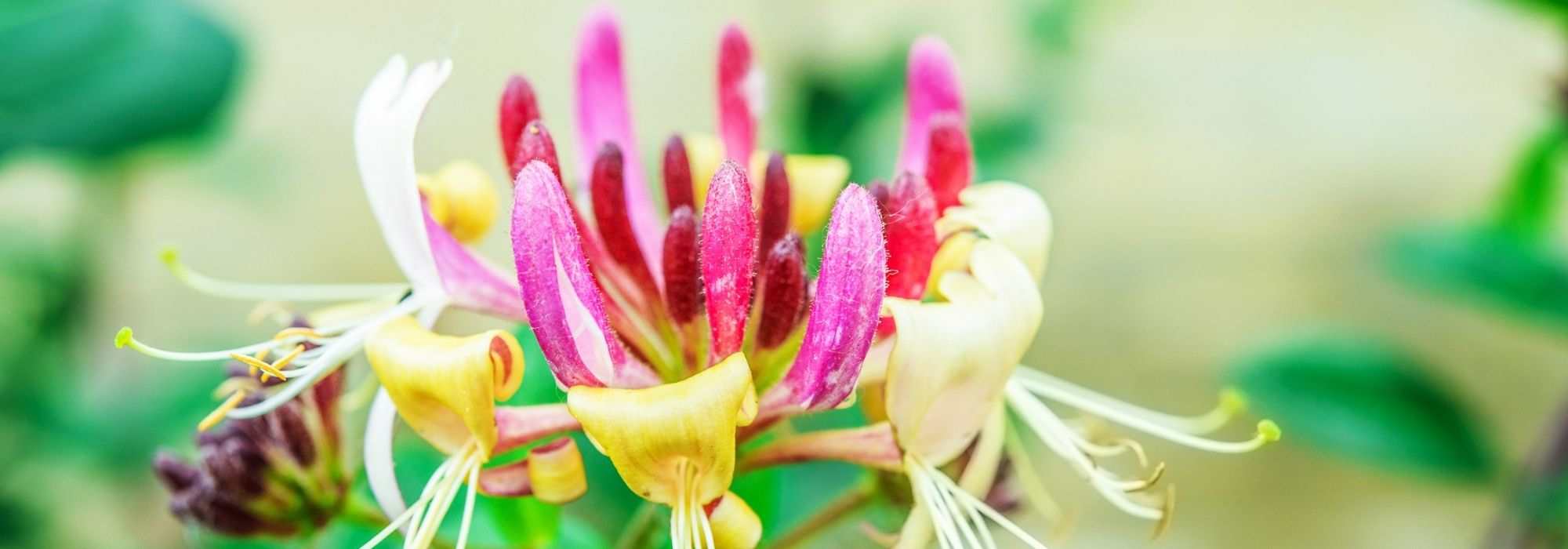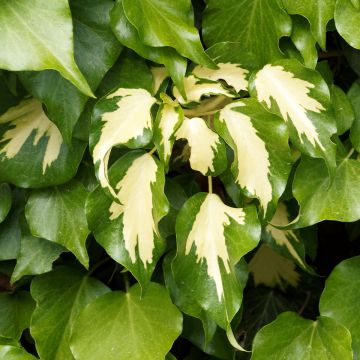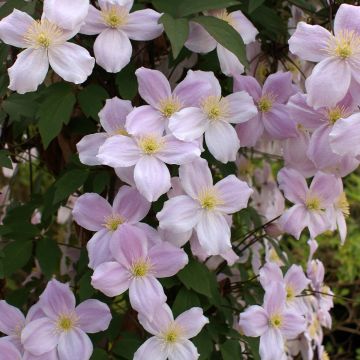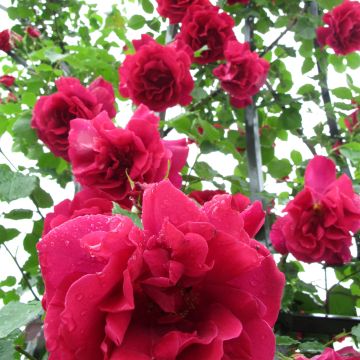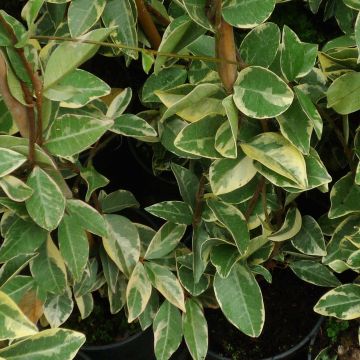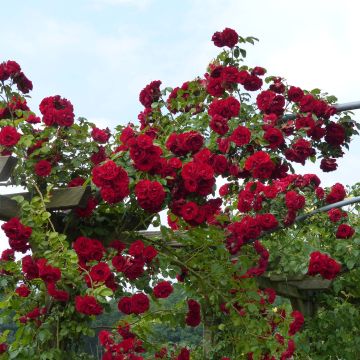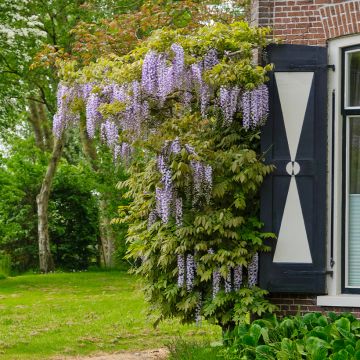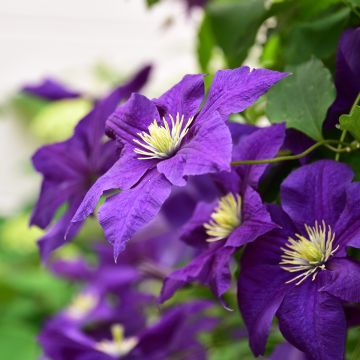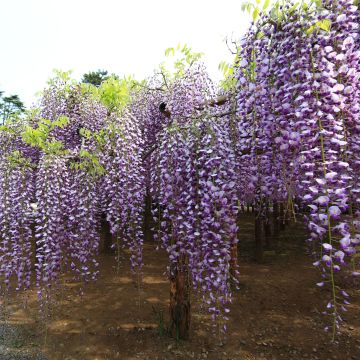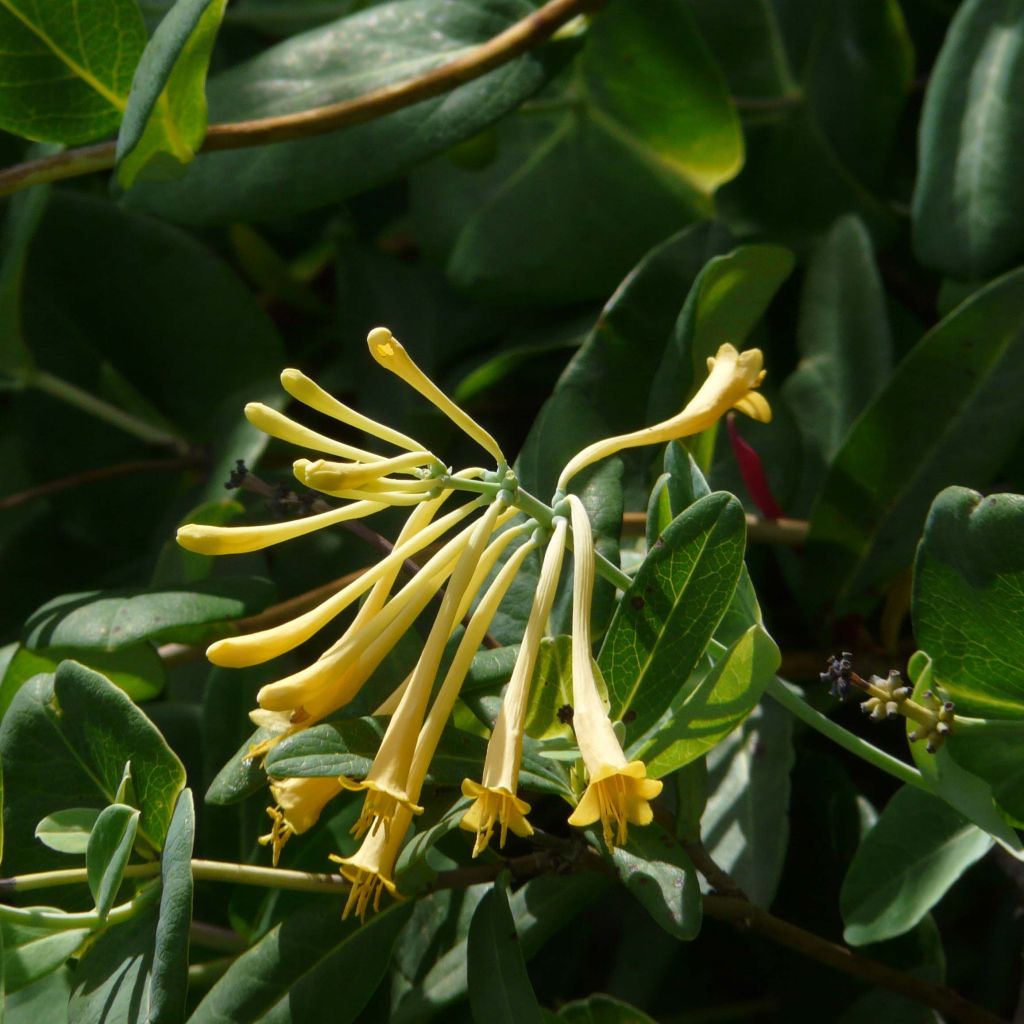

Lonicera sempervirens John Clayton
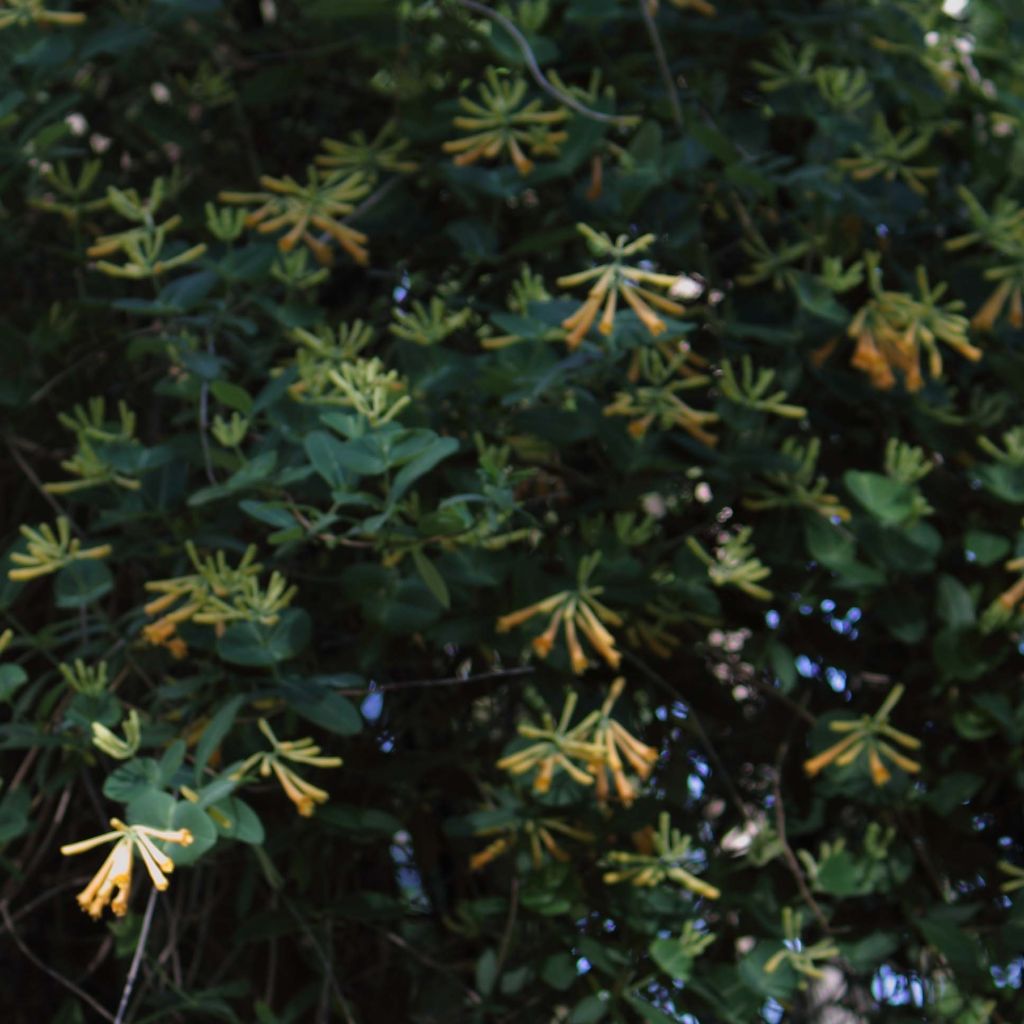

Lonicera sempervirens John Clayton
Lonicera sempervirens John Clayton
Lonicera sempervirens John Clayton
Trumpet Honeysuckle, Coral Honeysuckle
Special offer!
Receive a €20 voucher for any order over €90 (excluding delivery costs, credit notes, and plastic-free options)!
1- Add your favorite plants to your cart.
2- Once you have reached €90, confirm your order (you can even choose the delivery date!).
3- As soon as your order is shipped, you will receive an email containing your voucher code, valid for 3 months (90 days).
Your voucher is unique and can only be used once, for any order with a minimum value of €20, excluding delivery costs.
Can be combined with other current offers, non-divisible and non-refundable.
Why not try an alternative variety in stock?
View all →This plant carries a 6 months recovery warranty
More information
We guarantee the quality of our plants for a full growing cycle, and will replace at our expense any plant that fails to recover under normal climatic and planting conditions.
Would this plant suit my garden?
Set up your Plantfit profile →
Description
Lonicera sempervirens 'John Clayton' is a delicious compact form of honeysuckle, a climbing plant renowned for its robustness and perpetual flowering. It climbs up to 4m (13ft) in height and is adorned with foliage that is almost succulent, a beautiful bluish green, often evergreen in winter. Although not fragrant, its flowering is captivating due to its duration: its slender, brightly yellow flowers bloom from spring to autumn, and sometimes almost all year round in mild climates. This variety has excellent adaptability, and its cultivation is within the reach of all gardeners, even inexperienced ones.
The 'John Clayton' honeysuckle is derived from Lonicera sempervirens, native to the southeastern United States. It was discovered and selected on the grounds of an old church in Gloucester, Virginia, and named in honor of a 17th-century American botanist. Very cold-resistant, it thrives in both waterlogged soils and rockier, drier soils in summer. This plant appreciates sunny or semi-shaded exposures. Its foliage will disappear in winter in our coldest regions, but will persist in moderate to mild climates. Honeysuckles belong to the Caprifoliaceae family.
'John Clayton', a fast-growing plant, produces 4m (13ft) stems that bear thick, opposite pairs of leaves. The basal leaves are elongated and ovate (7.5cm (3in)), while those in the upper part, under the flowers, are smaller, more rounded and fused into a disc, so that the stem seems to pierce them. Their colour evolves from purple at budbreak to a slightly glaucous greyish-green at maturity. Flowering occurs at the tips of young shoots, throughout the growing season, from May-June to September. The slender, 5cm (2in) long tube-shaped flowers are light yellow, and their nectar-richness attracts pollinators. They are arranged in dense, almost flat clusters, like the spokes of a wheel, in the axils of the leaves. After pollination, they produce red berries that are not edible but appreciated by birds. The young branches are green, their bark turns brown and exfoliates over time, revealing a young straw-yellow wood.
Lonicer 'John Clayton' is fantastic for quickly concealing anything that needs to be hidden in a modest-sized garden, from an unsightly wire fence to an unattractive garden shed. Left to grow freely, it will fill in a declining hedge or enhance the edge of a grove of trees... In partial shade, there are plenty of combinations with clematis to consider: for example, it can be paired with lovely clematis like montana Mayleen, climbing roses like Ghislaine de Féligonde, or winter jasmine (Jasminum nudiflorum) or officinalis, a hardy passionflower like P. incarnata...
Lonicera sempervirens John Clayton in pictures


Plant habit
Flowering
Foliage
Botanical data
Lonicera
sempervirens
John Clayton
Caprifoliaceae
Trumpet Honeysuckle, Coral Honeysuckle
North America
Other Honeysuckle
View all →Planting and care
Honeysuckles generally thrive in good deep garden soil, without excessive limestone, in a gently sunny exposure. Lonicera John Clayton is undemanding but prefers sun or partial shade. Once well established in well-prepared soil, enriched with compost, it can manage on its own in all regions, even dry and hot or very cold in winter. Water regularly to help the plant establish itself, especially if the summer is dry. Carry out annual pruning to clean up the plant. However, it is possible to severely prune an older subject to completely renew its structure. This restoration can be done over one or two years. Honeysuckles are hardy climbing plants ideal for quickly dressing a wall or pergola. Provide them with support, they will cling on their own. We love them for their long flowering and wonderful fragrance. Our advice: Plant it near your patio to fully enjoy its intoxicating scent, which intensifies in the morning and evening. Their enemies are aphids, as well as powdery mildew. To reduce the risk of disease, it is useful to properly ventilate the branches of the honeysuckle and place it in an open location.
Planting period
Intended location
Care
Planting & care advice
This item has not been reviewed yet - be the first to leave a review about it.
Similar products
Haven't found what you were looking for?
Hardiness is the lowest winter temperature a plant can endure without suffering serious damage or even dying. However, hardiness is affected by location (a sheltered area, such as a patio), protection (winter cover) and soil type (hardiness is improved by well-drained soil).

Photo Sharing Terms & Conditions
In order to encourage gardeners to interact and share their experiences, Promesse de fleurs offers various media enabling content to be uploaded onto its Site - in particular via the ‘Photo sharing’ module.
The User agrees to refrain from:
- Posting any content that is illegal, prejudicial, insulting, racist, inciteful to hatred, revisionist, contrary to public decency, that infringes on privacy or on the privacy rights of third parties, in particular the publicity rights of persons and goods, intellectual property rights, or the right to privacy.
- Submitting content on behalf of a third party;
- Impersonate the identity of a third party and/or publish any personal information about a third party;
In general, the User undertakes to refrain from any unethical behaviour.
All Content (in particular text, comments, files, images, photos, videos, creative works, etc.), which may be subject to property or intellectual property rights, image or other private rights, shall remain the property of the User, subject to the limited rights granted by the terms of the licence granted by Promesse de fleurs as stated below. Users are at liberty to publish or not to publish such Content on the Site, notably via the ‘Photo Sharing’ facility, and accept that this Content shall be made public and freely accessible, notably on the Internet.
Users further acknowledge, undertake to have ,and guarantee that they hold all necessary rights and permissions to publish such material on the Site, in particular with regard to the legislation in force pertaining to any privacy, property, intellectual property, image, or contractual rights, or rights of any other nature. By publishing such Content on the Site, Users acknowledge accepting full liability as publishers of the Content within the meaning of the law, and grant Promesse de fleurs, free of charge, an inclusive, worldwide licence for the said Content for the entire duration of its publication, including all reproduction, representation, up/downloading, displaying, performing, transmission, and storage rights.
Users also grant permission for their name to be linked to the Content and accept that this link may not always be made available.
By engaging in posting material, Users consent to their Content becoming automatically accessible on the Internet, in particular on other sites and/or blogs and/or web pages of the Promesse de fleurs site, including in particular social pages and the Promesse de fleurs catalogue.
Users may secure the removal of entrusted content free of charge by issuing a simple request via our contact form.
The flowering period indicated on our website applies to countries and regions located in USDA zone 8 (France, the United Kingdom, Ireland, the Netherlands, etc.)
It will vary according to where you live:
- In zones 9 to 10 (Italy, Spain, Greece, etc.), flowering will occur about 2 to 4 weeks earlier.
- In zones 6 to 7 (Germany, Poland, Slovenia, and lower mountainous regions), flowering will be delayed by 2 to 3 weeks.
- In zone 5 (Central Europe, Scandinavia), blooming will be delayed by 3 to 5 weeks.
In temperate climates, pruning of spring-flowering shrubs (forsythia, spireas, etc.) should be done just after flowering.
Pruning of summer-flowering shrubs (Indian Lilac, Perovskia, etc.) can be done in winter or spring.
In cold regions as well as with frost-sensitive plants, avoid pruning too early when severe frosts may still occur.
The planting period indicated on our website applies to countries and regions located in USDA zone 8 (France, United Kingdom, Ireland, Netherlands).
It will vary according to where you live:
- In Mediterranean zones (Marseille, Madrid, Milan, etc.), autumn and winter are the best planting periods.
- In continental zones (Strasbourg, Munich, Vienna, etc.), delay planting by 2 to 3 weeks in spring and bring it forward by 2 to 4 weeks in autumn.
- In mountainous regions (the Alps, Pyrenees, Carpathians, etc.), it is best to plant in late spring (May-June) or late summer (August-September).
The harvesting period indicated on our website applies to countries and regions in USDA zone 8 (France, England, Ireland, the Netherlands).
In colder areas (Scandinavia, Poland, Austria...) fruit and vegetable harvests are likely to be delayed by 3-4 weeks.
In warmer areas (Italy, Spain, Greece, etc.), harvesting will probably take place earlier, depending on weather conditions.
The sowing periods indicated on our website apply to countries and regions within USDA Zone 8 (France, UK, Ireland, Netherlands).
In colder areas (Scandinavia, Poland, Austria...), delay any outdoor sowing by 3-4 weeks, or sow under glass.
In warmer climes (Italy, Spain, Greece, etc.), bring outdoor sowing forward by a few weeks.






























